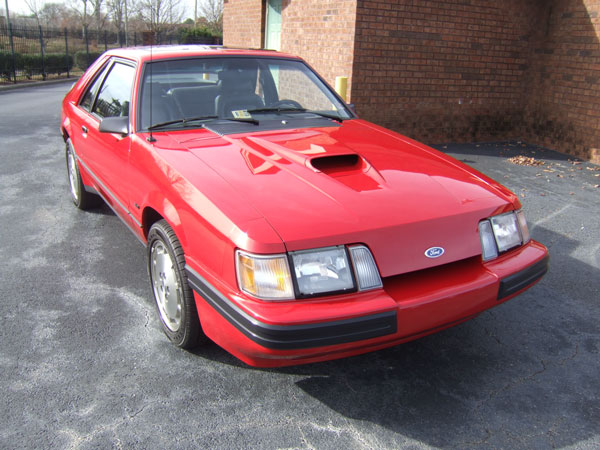Ford Mustang EcoBoost Coming – Is This the Next SVO Mustang?
 by Patrick Rall
by Patrick RallWhile speaking to a small group at Princeton University earlier this year, Bill Ford Jr. confirmed that there would be a Ford Mustang powered by an EcoBoost engine as Ford Motor Company works to spread their fuel-friendly yet performance-oriented turbocharging technology across more vehicles around the world.
There have been rumors of an EcoBoost Ford Mustang since the new Ford Taurus SHO hit the market with the 365 horsepower twin turbo V6, but prior to Mr. Ford’s comments, there had never been any real evidence of an EcoBoost Mustang. Sadly, Ford Motor Company is still keeping the EcoBoost Mustang details on the hush, but there are a few options that we could see within the next few years. Also, it will be interesting to see if Ford pays homage to the turbocharged 4-cylinder Mustangs of the Fox Body era, like the SVO and the Turbo GT, when they tackle the naming portion of this factory forced induction Mustang.
The first option for the EcoBoost Ford Mustang would be one powered by a turbocharged 4-cylinder. The original Ford Mustang Turbo GT was introduced in 1983, offering slightly less power than the top of the line 5.0L models. So if Ford were to bring back a turbocharged 4-cylinder option with EcoBoost technology for the 2013 model year, it could make for a fitting 30th anniversary edition of the original Turbo GT.
Or… Ford waits until 2014 and they celebrate the 30th anniversary of the SVO Mustang in the same year that they celebrate the 60th anniversary of the Mustang line. Many also expect the next generation of the Mustang to come around in 2014 so it might be less likely to see Ford bringing something ELSE out for the 2014 model year. The original SVO Mustangs in 1984 and 1985 offered almost identical power to the GT so perhaps Ford will launch a turbocharged smaller engine that offers similar power to the 5.0L GT but with better fuel economy?
The next option is the twin turbocharged V6 option, similar to the one found in the high performance Ford Taurus SHO. The 3.5L twin turbo engine from the SHO packs 365 horsepower so it would fit right between the 305 horsepower V6 found in the base model Mustang and the 412 horsepower 5.0L V8 in the Mustang GT. Since the new 5.0L has been found to make more than the suggested 412hp, Ford could even pour in a little more power and leave plenty of room between this mid-level engine and the premium V8. This model could also come in as a 2013 or 2014 model year vehicle, either recognizing the Turbo GT or the SVO.
The most interesting move would be introducing the first EcoBoost V8. Adding twin turbocharging technology to the current 5.0L would certainly make for one nasty-fast Mustang and this would be the first of its type in Mustang history. Imagine Ford launching the 60th anniversary edition of the Mustang in 2014 with a horsepower rating similar to the Dodge Challenger SRT8 (470hp), packing a twin turbo 5.0L while also offering better fuel economy than the 412hp, naturally aspirated 5.0L. Even before the new Coyote 5.0L V8 showed up under the hood of the 2011 Ford Mustang GT there were rumors that Ford had been working on a twin turbo version. Prior to the 2010 Detroit Auto Show, I had a chance to speak with Mike Harrison – the lead engineer for the 5.0L – who explained that there isn’t enough room in the engine bay of the Mustang to fit the piping and intercoolers needed to boost the 5.0. He finished that comment with “unless we did something like mounted the turbo on top of the engine like we did with the new PowerStroke”. Was that a hint of things to come or just his way of showing off how they have made technology work in other models?
With the 60th anniversary year of the Mustang about 18 months away, we should soon have a much better look at what is next in the evolution of the Ford Mustang.
